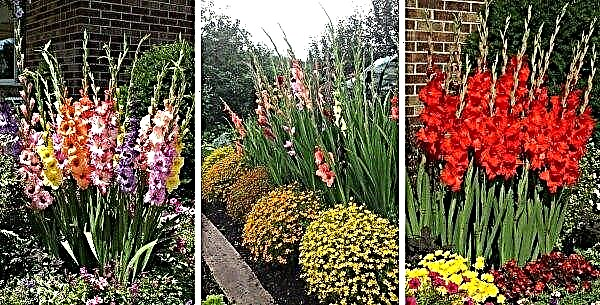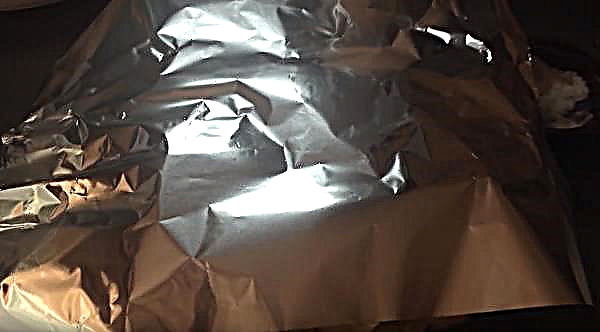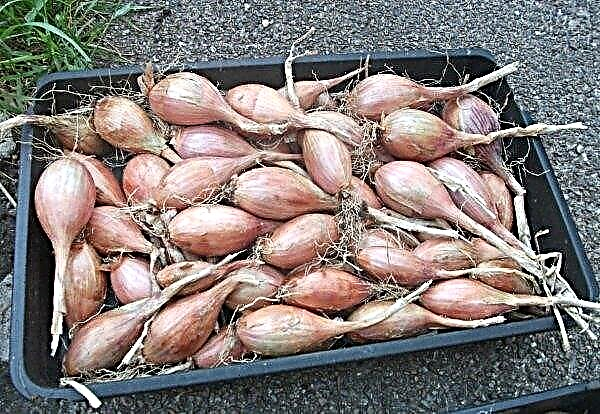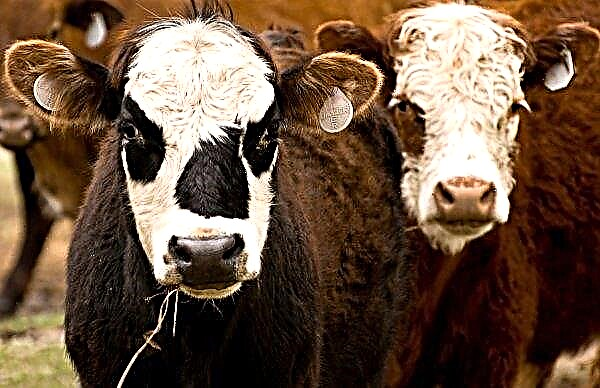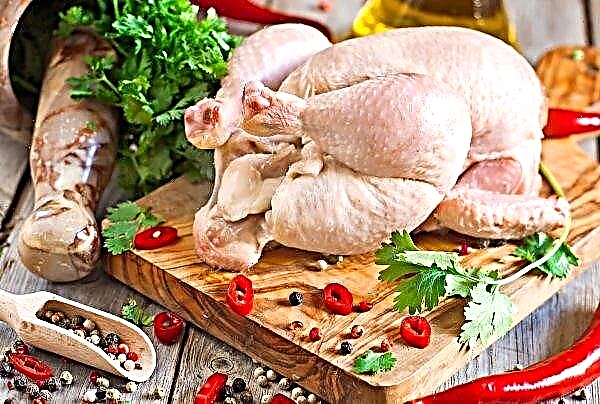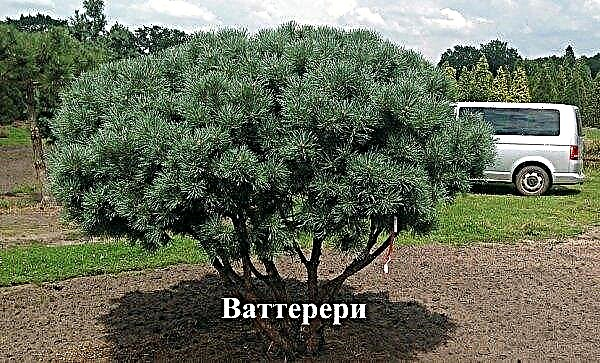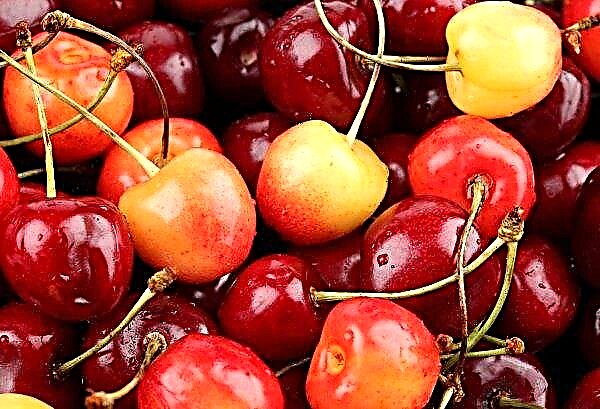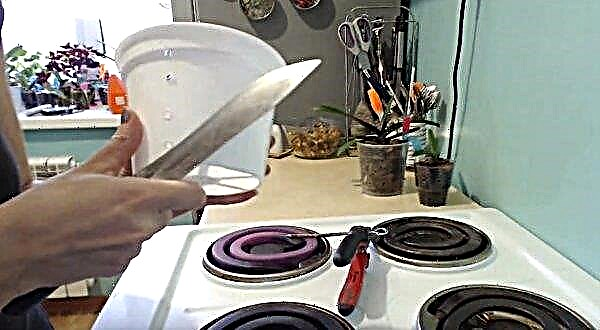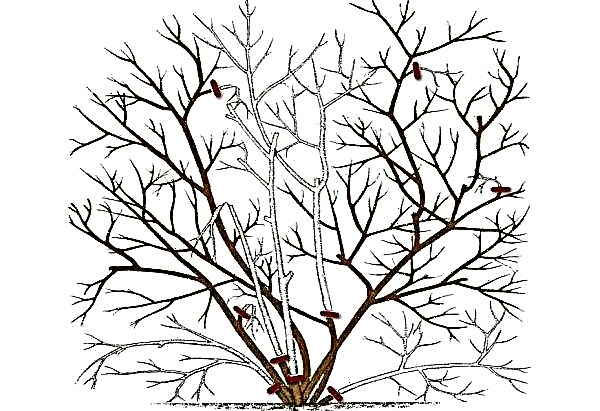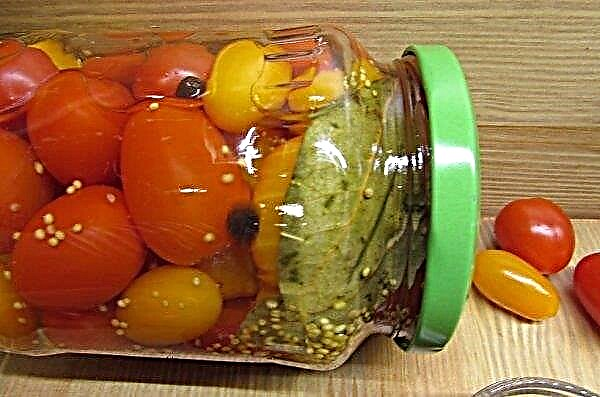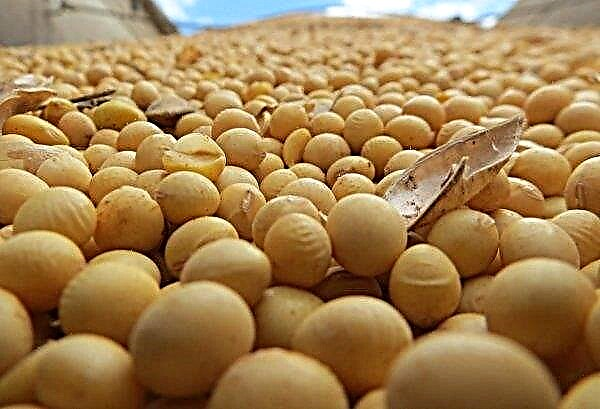In the world there are about 4 thousand varieties of potatoes bred by foreign and domestic breeders. Usually new hybrids are very popular. With Sineglazka potatoes, everything is different: this variety is old, but still loved by the people, as in the days of the Soviet Union. Our article will reveal the secret of the popularity of the variety, its dignity and features of cultivation.
Description and characteristics of the variety
The scientific name of the variety is Hannibal, possibly obtained in honor of the famous great-grandfather A.S. Pushkin. Blue-eyed potatoes were named for blue-violet eyes on light tubers. The hybrid appeared in the postwar period on the basis of the Institute of Starch Products.
The Soviet breeder S.I. Domin crossed wild-growing potatoes with cultivated ones, having obtained a remarkable result. The new variety received the number 15555. This hybrid was tested at the VNIISP experimental stations in different parts of the USSR. Although the new potato had many advantages, it received low marks due to the fact that it is poorly stored in large quantities.
Such a product is not suitable for industrial cultivation, therefore it is not registered in the state register. Nevertheless, the variety has taken root well in summer cottages in people, and it is still actively grown in different regions.Did you know? At the end of the XVII century. potatoes were brought by Peter I from Holland. And the first potato fields in the Russian Empire appeared at the direction of Catherine II in the estate of A.P. Hannibal, the dark-skinned ancestor of Pushkin.
The blue eye looks different from other varieties: its bushes are strong, sprawling, with dense dark green foliage. A few inflorescences consist of several blue flowers. After flowering, the berries almost do not appear. The root system is developed and at the same time compact, which facilitates digging without causing damage to root crops.
Sineglazo tubers are oval, regular in shape, medium and large sizes (70–200 g). The peel is beige or light lilac, and the eyes and shoots are blue and violet. The pulp is dense, has a beautiful creamy white tint.
Due to the poor storage capacity for industrial purposes, Sineglazka is not grown: up to 75% of the crop deteriorates. However, in small quantities and in good conditions, this potato is perfectly stored, therefore, in dachas and vegetable gardens, the variety continues to occupy significant areas.
Did you know? There is a lot of vitamin C in potatoes: from 1 ton of the initial product, 1 kg of citric acid can be obtained, and a portion of 300 g of this vegetable replenishes the human body with a daily dose of vitamin C.
Taste qualities
Great taste is the main positive property of Sineglazka. And if different varieties of potatoes are suitable for cooking only a certain type of dishes, then the described potato is universal.
From it you can cook absolutely everything: boiled, stewed, fried and baked dishes. Due to the fact that it contains an average amount of starch (15%), in the finished form it is very crumbly. It is believed that it is from these root crops that the most tender puree is obtained.
Mid-season potato varieties also include:
Beneficial features
The blue eye is not only excellent in taste - it is more useful than some other varieties. It is the low starch content that makes the vegetable easily digestible and dietary, as well as suitable for baby food.
In the root crop in question there are many useful substances, namely:
- proteins important for the human body;
- vitamins C, group B, provitamin A;
- mineral salts (potassium, phosphorus, sodium, calcium, iron, magnesium, etc.).

Ripening dates and productivity
Variety Sineglazka mid-season: from the emergence of seedlings to the complete ripening of root crops, 90-110 days pass. However, tubers are formed quite early - this makes it possible in June-July to enjoy young potatoes. The vegetable becomes more delicious in August, but it fully ripens only by the end of September.
Blue-eyed potatoes are also loved for their productivity: from one bush you can collect 10-12 large potatoes, and from 1 hundred parts - about 500 kg. Productivity is high and due to the fact that the variety is not susceptible to many potato diseases (scab, rot, late blight, cancer and viruses). The quality and quantity of the crop largely depends on weather conditions during the growing season, soil composition and the quality of the seed.Unfortunately, keeping a large crop is very difficult. For storage you need a spacious, cool and dry room (cellar) and wooden boxes of small volume. If the storage conditions are not ideal, the tubers will wither, rot, and mold. For this reason, Sineglazka is often grown for consumption in a young form.
Video: Sineglaz potato harvest
Advantages and disadvantages of the variety
- The advantages of Sineglazy include:
- good yields;
- excellent taste of fruits;
- useful properties of potatoes;
- universal application in cooking;
- thin skin and a small number of superficial ocelli;
- good presentation of tubers;
- resistance to many diseases;
- easy care.
Did you know? There is a lot of vitamin C in potatoes: from 1 ton of the initial product, 1 kg of citric acid can be obtained, and a portion of 300 g of this vegetable replenishes the human body with a daily dose of vitamin C.
- There are fewer disadvantages, but they are significant:
- it is impossible to maintain a large crop;
- every 4-5 years the variety degenerates and needs to be updated;
- since the variety is old and not contained in the State Register, it is difficult to obtain seed;
- root crops are susceptible to wireworm attacks.
Planting and growing varieties
The blue eye is unpretentious: it will yield a crop even under adverse weather conditions and not full care. But in order to get a good and high-quality crop, you should still adhere to the rules of agricultural technology, common for all potato varieties.
Optimal landing times
Planting time varies depending on the region: in the central regions it is May, and in the southern - April. The weather also makes adjustments and can shift the deadline by 1-2 weeks.
There are certain signs by which you can determine that it is time to plant potatoes:
- air temperature does not fall below + 10 ° C;
- soil temperature at a depth of 10 cm - + 6 ... + 8 ° C (at lower rates, the growth and development of potatoes slows down);
- young leaves should already bloom on birch trees (a popular sign).
Seed Potato Preparation
In the southern regions on fertile soil, potatoes will yield a good crop even without preliminary preparation, but in the middle lane you can not do without it.
Preparation of planting material takes place in several stages:
- In the fall immediately after harvesting, you need to select the seed material. For this purpose, medium-sized tubers (about a chicken egg) weighing about 50 g are best suited. Such specimens quickly adapt to new conditions in the ground, forming a strong root system and releasing healthy sprouts. But in order to obtain early young potatoes, larger root crops (up to 90 g) can be selected. Small specimens for planting are not suitable - they will slowly grow, develop and are unlikely to give a good harvest.
- In the spring approximately 2–4 weeks before planting, the material selected for planting is recommended to be warmed up and germinated. To do this, boxes with potatoes need to be placed in a bright and dry room at a temperature of + 10 ... + 15 ° C or scattered there directly on the floor. If it is warmer, then the sprouts will appear faster.
- Just before landing tubers must be disinfected into the soil with special means to protect them from diseases and pests. Wood ash is a good remedy, as it contains many beneficial substances.
Soil preparation
Potato loves loose, fertile soil, which allows water and air to pass through well. Good results are obtained by planting in sandy, sandy loamy or loamy soil with neutral acidity.

A plot for potatoes is prepared in 2 stages:
- In autumn, a deep digging is carried out (25–30 cm) together with rotted manure previously scattered on the surface.
- In the spring, a month before planting, the earth is again dug up with compost, but not so deep - by 15 cm.
If the earth was not fertilized either in the fall or in the spring, then top dressing can be applied directly to the wells during planting, slightly mixed with the ground. Organic fertilizer is replaced by mineral: nitroammophos, potassium sulfate or superphosphate.
Important! The potato area should be selected open, well-lit, but protected from strong winds — perhaps bushes.
Planting scheme and crop rotation
When landing Sineglazki you need to consider such points:
- the depth of the holes depends on the composition of the soil (in loose soil - deeper, in dense - closer to the surface);
- the distance between the pits and the rows is affected by the characteristics of the variety - the tops grow tall and spreading, so there is enough space for each bush.
In this regard, the landing scheme of Hannibal looks like this:
- the distance between the recesses in the row is 40-50 cm;
- row spacing - 60–70 cm;
- the depth of the pit in sandy loam soil is 10–12 cm, in clay soil - 7–8 cm.

Potato predecessors on the plot very much affect the health of the bushes and the quality of the crop, therefore it is important to adhere to crop rotation rules:
- good predecessors - cucumbers, cabbage, legumes, pumpkin, carrots and beets;
- suitable neighbors - beans, onions, cabbage, cucumbers, mint;
- bad predecessors and neighbors - nightshade crops (eggplant, tomatoes, peppers and potatoes). All of them suffer from the same diseases and attract the same pests.
Variety Care Rules
The blue eye, like other potato varieties, is unpretentious and does not require special attention. It is only necessary to adhere to the basic rules of care - this is watering, fertilizing, cultivating and hilling.
Potatoes do not like frequent watering, but they also endure drought hard: the earth should be moderately moist. In normal spring and summer with the usual amount of rain it is enough to water the plants 3 times per season, not more than 1 time in 1.5–2 weeks. If there is little rainfall and dry summers, then 5-time or even more frequent watering may be necessary.
Irrigation regime corresponds to the growing season:
- after the appearance of sprouts;
- at the beginning of flowering;
- after flowering.
In the process of growth, potatoes actively absorb nitrogen, phosphorus and potassium from the soil, so you need to replenish the reserves of these elements so that the plant has something to eat. Thus, the bushes strengthen and increase their resistance to disease.
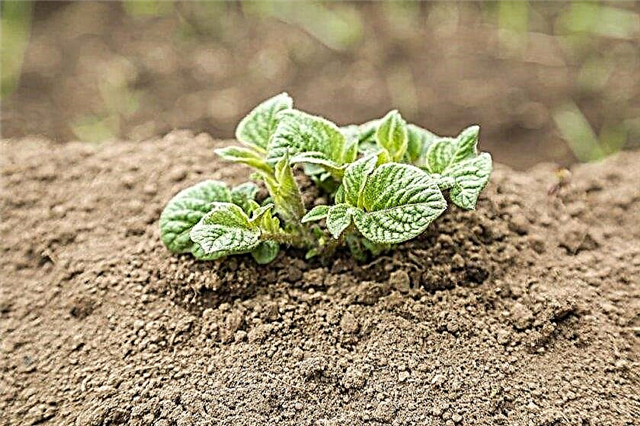
The composition of the fertilizer depends on the stage of development:
- After emergence, the plant needs nitrogen to grow tops and leaves. This will help organic fertilizer - chicken droppings, mixed in water (1:15) and infused for a day. It can be replaced with mineral top dressing - 20 g of urea per 10 liters of water. Dosage - 1 liter of solution per 1 bush.
- Before flowering, the bush needs phosphorus and potassium more. Suitable top dressing - stir 20 g of potassium sulfate and 60 g of ash in 10 l of water; dissolve 60 g of superphosphate in 1 bucket of water.
In the summer, you can also feed potatoes in a non-root way. To do this, use special fertilizer according to the instructions.
Important! At the second stage of the growing season, you should stop feeding with nitrogen, otherwise the bush will not have the strength for flowering and development of tubers, but only for the development of green parts.
- Hilling as a necessary procedure has its advantages:
- promotes the development of tubers;
- opens air access to them;
- protects from possible frosts;
- makes the bush strong and healthy.
The hilling of the bushes immediately after application of fertilizing has a good effect.
The procedure is carried out 2 times per season:
- when the seedlings have reached 20 cm in height and fertilizers have already been applied, the plants are covered with earth by a third;
- after 2-3 weeks, that is, before flowering begins.

The soil needs to be loosened after each watering and rain.
This procedure brings the following benefits:
- the crust is destroyed, thereby restoring air exchange in the root system;
- weed is destroyed.
Diseases and pests
The blue eye is immune to major potato diseases. However, there are diseases and insects to which this variety is very vulnerable. Infection occurs only due to improper agricultural technology.
Diseases:
- Fomoz - A fungal disease that, during flowering, first affects leaf petioles, stems, and then root crops. Methods of struggle - fungicides "Thanos", "Shirlan", "Ridomil Gold".

- Striped mosaic - a viral infection, in which the leaves become covered with dark spots and stripes along the veins, die and fall off, then the whole bush dies. The plant needs to be dug up and burned to protect others.

Pests:
- Wireworm - the nutcracker larva in hard shell, damages the tubers, after which they are not stored. Control measures - dry mustard or insecticides mixed with sand, put into the hole when planting.
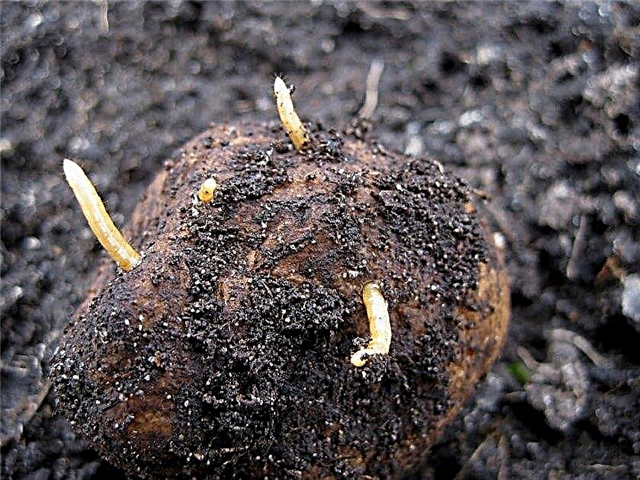
- Potato moth - makes eggs laying on the back of the leaf, then the caterpillars eat the plant from the inside and damage the surface tubers. Methods of control - spraying with insecticides and the use of pheromone traps.
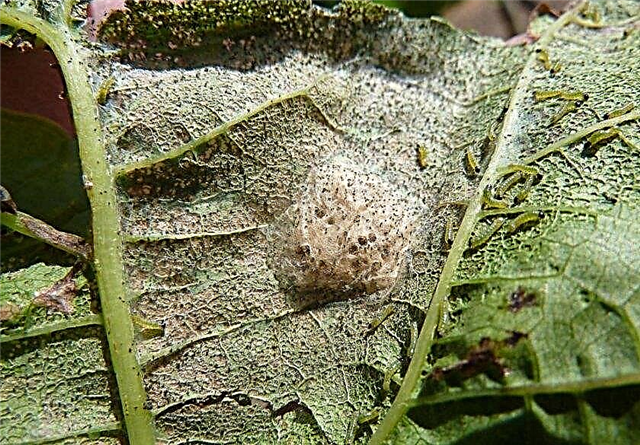
Preventive actions:
- Autumn digging of a site;
- crop rotation compliance;
- selection of quality planting material;
- pickling potatoes before planting;
- timely weeding and destruction of weed grass;
- marigolds sown next to potatoes will scare away pests (nutcracker).
How to harvest and store crops
Harvest dates vary by region and planting time. Potatoes planted in April in the southern regions are ready for harvesting in August. In the middle lane, it is best to dig up tubers in September, although young potatoes that are not intended for storage can be eaten from June-July.
Things to consider when digging potatoes:
- dig only in dry weather;
- if the tops did not have time to dry, it should be mowed at a level of 10 cm from the ground 1-2 weeks before harvesting so that it does not take away nutrients from tubers;
- it is better to dig not with a shovel, but with a pitchfork - in order to avoid damage to root crops;
- dug tubers should remain in the open air for several hours to dry.
 Since Sineglazka is poorly stored, it is necessary to create the most optimal conditions for it, then dishes from it will delight all winter.
Since Sineglazka is poorly stored, it is necessary to create the most optimal conditions for it, then dishes from it will delight all winter.To keep the fruits of the plant as long as possible, you must follow these recommendations:
- Immediately after digging and drying, the potatoes need to be sorted by size and put into boxes. Damaged specimens are stored for food. For the future planting, the best potatoes are selected.
- The first month after harvesting, the potato boxes should be in a dark and warm room with an average temperature of + 15 ... + 18 ° С. During this time, the skin on the tubers will become harder and the taste will improve.
- Boxes are cleaned for the winter in a basement or cellar with an approximate air temperature of + 2 ... + 5 ° C and low humidity. The room must have good air circulation.
- In the process of storage, from time to time it is necessary to sort out the tubers - pick off the shoots and discard perishable specimens.
Variety Analogs
There is not a single potato variety that is an absolute analogue of Sineglazka. But there are similar varieties: among them can be called Dubravka and Blue. These are mid-season varieties.
They have common positive characteristics with Sineglazka:
- blooming in blue flowers;
- high productivity;
- tasty tubers of universal application;
- resistance to certain diseases.
The lack of these varieties in the high content of starch in root crops. But they surpassed Sineglazka in that it is well and long stored. For 70 years of existence, the Sineglazka potato has proved itself well, therefore it still remains popular. The only serious drawback of the variety is poor stubbornness, but it can also be corrected if all storage rules are observed.





